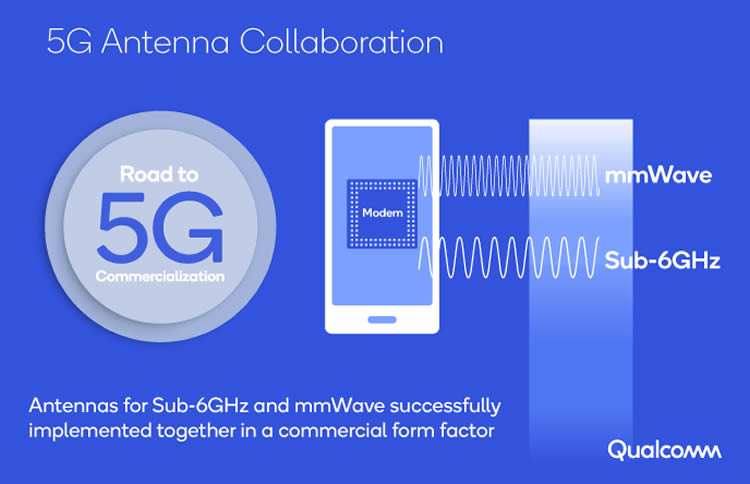Technical Writer at 5G.co.uk
Sarah Wray is a technical writer with over 10 years' experience writing about technology, including telecoms, smart cities, data, IoT, aerospace, and more.

Qualcomm and Chinese handset manufacturer Vivo have partnered to develop new 5G antenna technology, integrating 28GHz mmWave (millimetre wave) antennas, along with sub-6 GHz, into a commercial smartphone design.
The partners were able to successfully demonstrate 5G mmWave coexisting with sub-6 GHz in a single form factor. They tested performance by carrying out radiated measurements at the Qualcomm antenna lab in San Diego.
They say their work will speed up the deployment of commercial 5G and Vivo confirmed the project will accelerate its launch of 5G devices.
New mmWave technologies for 5G will improve speed, latency and capacity. Sub-6GHz frequencies provide flexibility, coverage and capacity benefits. Both 5G sub-6 GHz and mmWave antenna technology are expected to be deployed in all major markets globally, starting next year.
This means 5G smartphones need both sub-6GHz and mmWave antenna systems.
With the latest development, the partners are addressing one of the key design challenges facing phone manufacturers and network operators – integrating all the different radios and their frequencies and dependencies, along with the additional complexity that 5G adds.
Sub-6GHz uses single-element, low-gain, omni-directional antennas, while mmWave requires a narrow-beam, high-gain antenna system made up of multiple combined radiators.
As more is packed into them, phones still need to be thin, safe and delivered fast. Qualcomm notes that mistakes with antenna design can delay product launches by months and cost millions of dollars.
Dr Allen Tran, VP, Engineering, Qualcomm, said: “This achievement, the demonstration of 5G mmWave coexisting with sub-6 GHz in a commercial form factor, is groundbreaking work critical to the commercial launch of 5G.”
Dr. Huan-Chu Huang, Antenna Technical Director/ Principal Antenna Expert at Vivo, commented: "After this successful completion of 5G mmWave antenna design and measurement based on a Vivo commercial form factor, consumers will soon see the next round of new device designs offering superior performance benefits and a taste of the next generation mobile experience."
Qualcomm says this work with Vivo is just one example of the work it is doing “behind the scenes” to enable the 5G ecosystem, noting that these projects are often not visible to the general public or even the wider telecommunications industry.
The company says it will share more details on more of these types of projects in the coming months.
Lyca Mobile’s cheap Pay As You Go deals include roaming and international minutes.





